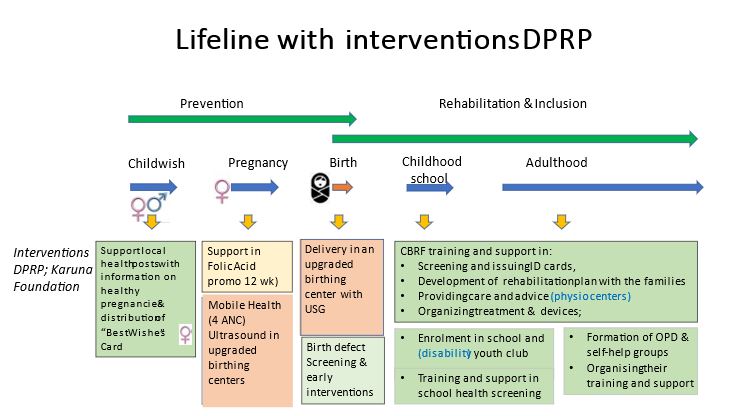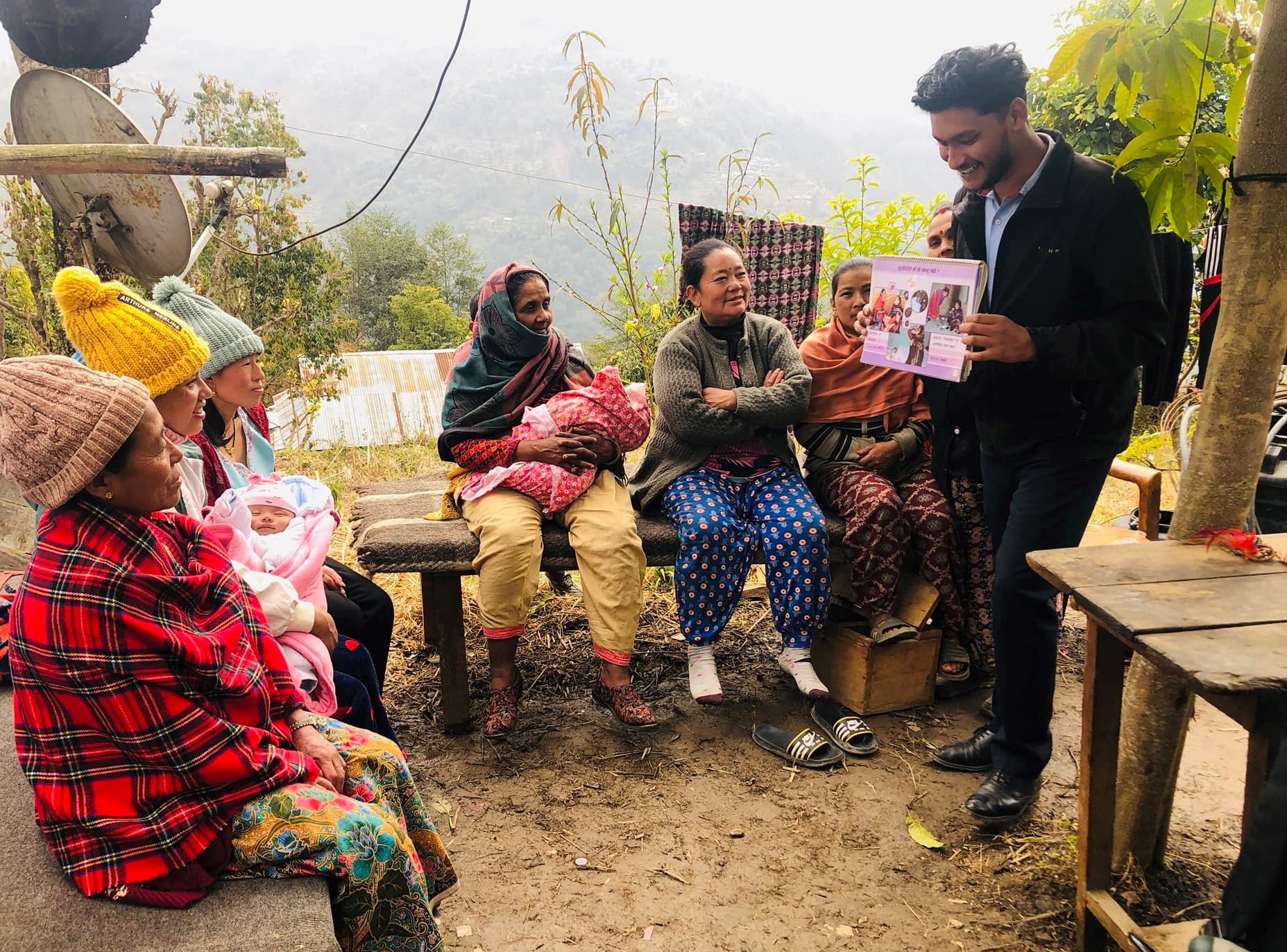The major interventions in the program
To provide context to the preliminary results in prevention and rehabilitation, a so-called “lifeline” of possible interventions was created, showing: “healthy” conception, better prenatal care, better care around delivery, better detection and treatment of children with congenital anomalies, and better care and support for people with disabilities. The DPRP intervenes in each of these areas.

By 2023, the interventions in the yellow box are taken over by the government and hence taken out of the DPRP 2.0 program. The upgrading of birthing centers and the 4 ANC messaging program (orange box) are also taken out of the DPRP 2.0, as the impact was not good enough and we had to reduce costs.
Better conception.
It is known, that the use of folic acid around conception leads to the birth of fewer children with congenital anomalies, especially spina bifida (spina bifida) and cleft palate (Hazelip). The program aims to encourage couples who wish to have children to take folic acid and continue with it for the first 3 months of pregnancy.
Better prenatal care.
The program aims to ensure that pregnant women are given good preconception advice (a so-called “best wishes card”), are checked four times during pregnancy, and are examined at least once by ultrasound/ultrasound. Through a combination of these, congenital anomalies are prevented or detected early, allowing appropriate action to be taken.
Better perinatal care.
Still, a proportion of women give birth under poor conditions, which lead to an increased risk of abnormalities in the baby, such as cerebral palsy. The program aims to avoid deliveries in high-risk conditions such as remote villages or poorly equipped health posts. In addition, it is of great importance to diagnose congenital malformations in the newborn baby quickly and act accordingly. Neglect of treatable disabilities is a mortal sin.
Better care for children with disabilities.
Many disabilities cannot be diagnosed around delivery but only manifest themselves later. Some of them are difficult to diagnose in everyday life, think of forms of hearing loss. In the project, children are screened at schools and in villages or neighbourhoods for the presence of physical or mental abnormalities. The newly recruited and trained “community-based rehabilitation facilitator (CBRF)” plays a central role in organizing this.
Better care and support for adults with disabilities.
Despite good prevention and early detection, children with disabilities will often need care and support even in adulthood. Moreover, adults will also become disabled due to diseases and accidents. The project cannot take over the care and guidance of these people, but it can help establish the social structures that will enable people with disabilities to lead a life of value to themselves and society. Think of adapted forms of work and self-help groups, in which opportunities and experiences are exchanged. Here, too, the CBRFs play a key role.
Finally, what is called “system strengthening”.
When our support ends, the government will continue the program and its core values must be preserved. Anchoring them in Nepal’s own public healthcare system is crucial to make it sustainable. Hence much emphasis is put on training and coaching of government staff and incorporating working guidelines, funding modalities and values in procedures and policies. Moreover, it is an ambition of the DPRP that the achievements are also rolled out in the rest of Nepal. In 2023 a collaboration with the Federal Government and UNICEF NEPAL has started to make this happen.
School health screening
All schoolchildren are screened on potential disabilities like hearing loss, low vision or stunted growth and subsequently helped with appliances like hearing aids, glasses or advice on nutrition.

